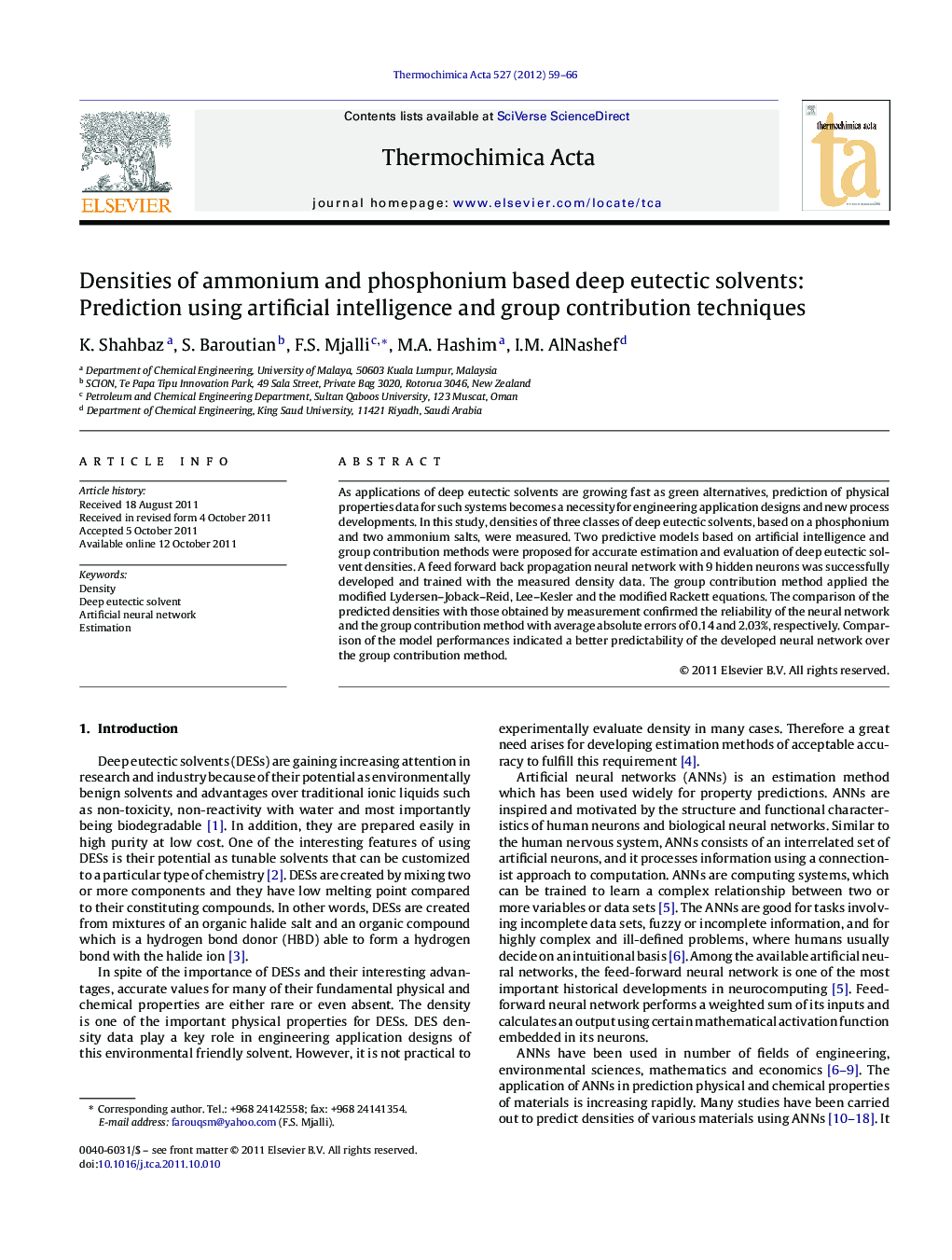| Article ID | Journal | Published Year | Pages | File Type |
|---|---|---|---|---|
| 674298 | Thermochimica Acta | 2012 | 8 Pages |
As applications of deep eutectic solvents are growing fast as green alternatives, prediction of physical properties data for such systems becomes a necessity for engineering application designs and new process developments. In this study, densities of three classes of deep eutectic solvents, based on a phosphonium and two ammonium salts, were measured. Two predictive models based on artificial intelligence and group contribution methods were proposed for accurate estimation and evaluation of deep eutectic solvent densities. A feed forward back propagation neural network with 9 hidden neurons was successfully developed and trained with the measured density data. The group contribution method applied the modified Lydersen–Joback–Reid, Lee–Kesler and the modified Rackett equations. The comparison of the predicted densities with those obtained by measurement confirmed the reliability of the neural network and the group contribution method with average absolute errors of 0.14 and 2.03%, respectively. Comparison of the model performances indicated a better predictability of the developed neural network over the group contribution method.
► Densities of three classes of deep eutectic solvents were measured. ► Two predictive models based on ANNs and group contributions were proposed. ► The ANNs predicted density with an average absolute error of 0.14%. ► The group contribution method had reasonable predictability. ► The ANNs had better predictabilities, especially at higher temperatures.
